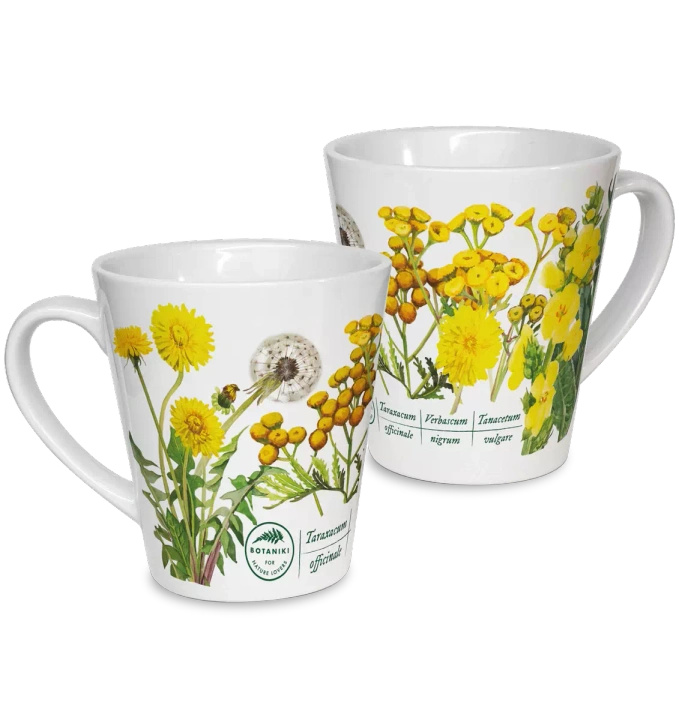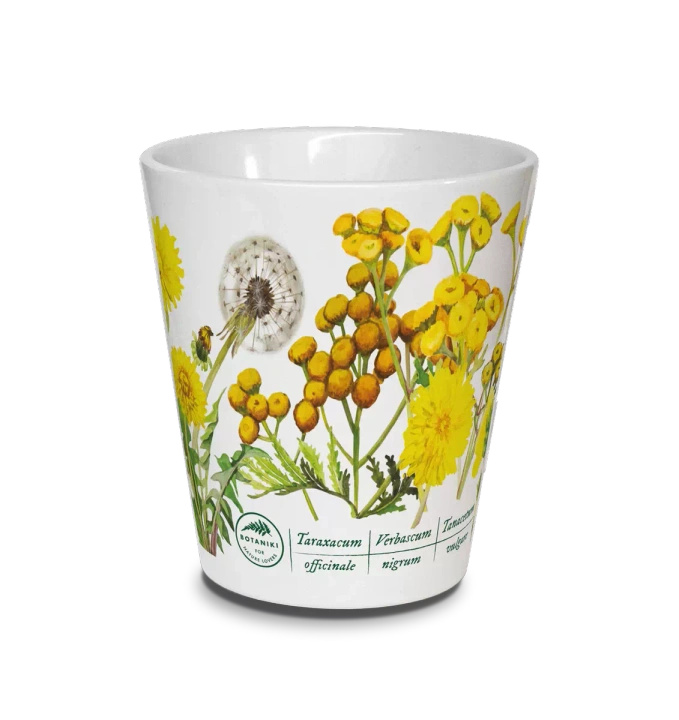Golden herbs — latte mug
- With a 300 ml ceramic mug with your favorite plant - your morning coffee will get a unique character.
Subscription products in your shopping cart
Set one delivery frequency for all subscription products in your cart every:
Subscription products in your shopping cart
Golden herbs
Darkmullein(Verbascum nigrum) is a member of the lepidopterous family (Scrophulariaceae), and is a biennial plant - the first year it produces a rosette of leaves, and the second year it flowers. The lower leaves cover the heart-shaped base of the stem, sparsely hairy on top, and covered with gray cuticle with star-shaped hairs underneath. The mullein grows up to 1 m tall, prefers sandy-stony dry soils, poor in calcium. The dark mullein's greatest ornament is its spike-shaped inflorescences. The plant sets flowers from June to September, in the angles of the inflorescences with a sub-flower - they are five-parted, golden-yellow with a reddish spot at the base. The dark mullein is also grown in gardens, and its pollen is excellent food for honey bees - due to its long bloom.
Dandelion, common dandelion(Taraxacum) - the very Latin name of this popular plant is debatable because of the huge number of dandelion microspecies - more than 1000 in Europe. Dandelion is a short-lived perennial - usually in the first year it produces a rosette of leaves, and the second year it blooms. In Central Europe, peak flowering is from mid-April to the end of May, further north and in the mountains from late April to early June, in higher elevations also later. Mass flowering lasts for about two weeks and is then extremely phenomenal - huge expanses of golden yellow flowers opening on sunny days. About 7 days after flowering, "blowpipes" or mature fruiting bodies appear, producing light seeds that can travel up to 10 km.
Commontansy (Tanacetum vulgare L.) - a species of plant belonging to the Asteraceae family, commonly found in Poland. Its flowers are gathered in umbels, consisting of flattened baskets of orange-yellow and yellow color. The plant produces large, pinnate leaves, and the entire plant is toxic, emitting a rather unpleasant, strong odor, somewhat resembling the smell of camphor. The herb of the plant is poisonous to cattle. Tansy is an expansive plant and spreads freely, so its growth should be controlled in the garden. It prefers sunny positions and permeable, dry soils.











